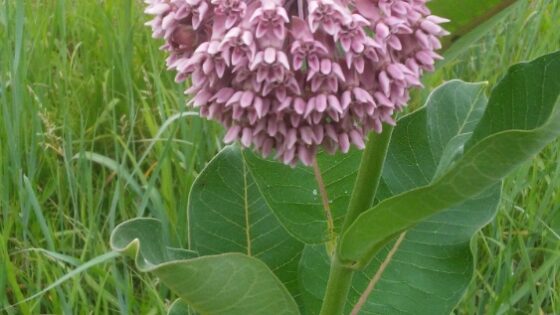The Gazette is partnering with the Linn Landowner Forum to present a weekly series of columns about elements landowners should consider when replacing trees and plants lost in the Aug. 10 derecho. The series will focus on recovery, the importance of native plants and other topics. Third in a series. The original article was written by Shannan Ramsey and published on the Gazette on October 17, 2020.

Shannon Ramsey is founding president and CEO of Trees Forever.
The Aug. 10 derecho destroyed our beloved trees beyond what anyone could imagine.
While it is heartbreaking to see trunks and limbs hauled away in big trailers, we have no choice but to move on and replant.
Please join me in envisioning a restored canopy of healthy trees — a green, diverse and beautiful urban forest, planted one tree at a time. But first, let’s take time to appreciate the trees that survived.
This fall, many of us will marvel over a beautiful tree with red or orange leaves. Maples are always full of color, followed by a parade of oaks and others, each species bringing its own autumn palette. Certainly there will be far fewer spots of color in areas hit by the storm. However, some trees will be seen for the first time as they have been freed with more space to spread their limbs.

Shattered trees are seen on the Cornell College campus in Mount Vernon, Iowa on Thursday, Aug. 20, 2020. Groundscrew members from the University of Dubuque took on maintenance tasks for the Cornell groundskeepers, who have been busy clearing away debris after the derecho that swept through the area on Monday, Aug. 10, 2020. (Rebecca F. Miller/The Gazette)
Before you plant, take some time to plan. Our area District Forester Mark Vitosh recommends this: “Before planting new trees, look closely to see if you have small oaks and other desirable trees coming up, which will carry on the genetic line of those trees we’ve lost. Protect them from deer and mowers with fence and mulch.”
As you plan your future landscape, commit to mowing less often. Don’t try to be so tidy. Many creatures have been left in desperate need of habitat. Pollinators nest and winter over in bark and brush, so lots of leaf litter and brush are good for wildlife.

The Hill residence is located near Brucemore on Cedar Rapids’ southeast side. Photo by Katie Hill.
Katie Hill, a local homeowner with several acres within city limits, created a small prairie: “Plant native seed and quit spending a fortune on grass, spraying and mowing. I did just that, and now have an abundance of butterflies, bees and birds. I learned last year that I have a population of the endangered rusty patch bumblebee right here in my backyard.”
With more sunshine hitting our lawns and forest floors, the storms’ aftermath brings an opportunity to create a little prairie in areas that are particularly sunny. Plant prairie seeds now because their seeds require a hard Midwest winter to germinate in the spring. Imagine that: some species actually love and require a cold Iowa winter.
As Katie Hill did, please choose native trees and shrubs because they are acclimated to our area. As part of a critically important food web, native species support squirrels, birds, bees, butterflies and a host of wildlife. One oak can support almost 500 species — it’s like a meadow in the sky.
Natives provide food and home that non-native, or ornamental, species simply can’t.
When planting, don’t set your tree too deeply — make sure the root flare is even with the ground. (Not sure what a root flare looks like? Check our website, treesforever.org to learn how to plant a tree.) Be sure to water often. A young tree needs 5 gallons of water every week to get established.
The loss is great, but so are the opportunities. During the coming months of winter, take time to learn more about trees and landscapes. Become a volunteer or a TreeKeeper or serve your neighbors by starting a water brigade. You can set an example by mowing a little less frequently. Trees Forever offers webinars on how to plant and care for trees along with more in-depth training.
It will take an army of volunteers and homeowners to plant and care for these new trees to ensure they grow to glorious heights. Together, we will recreate those beautiful tree-lined streets and neighborhoods. It will take patience and commitment, but we’ll get there one tree at a time.
Chief Executive Officer Shannon Ramsay founded Trees Forever more than 30 years ago in Cedar Rapids, and has postponed her retirement to focus the organization’s efforts toward replanting. She can be reached at [email protected].



